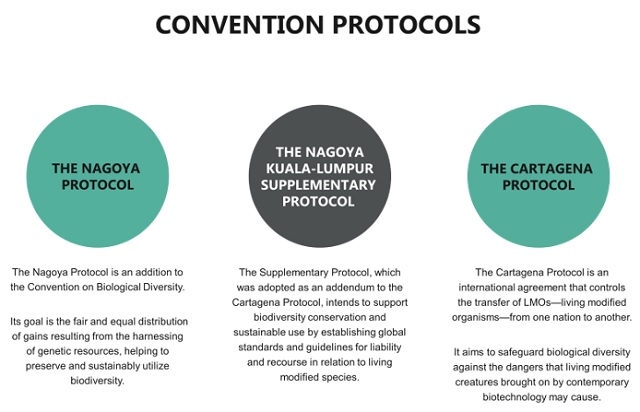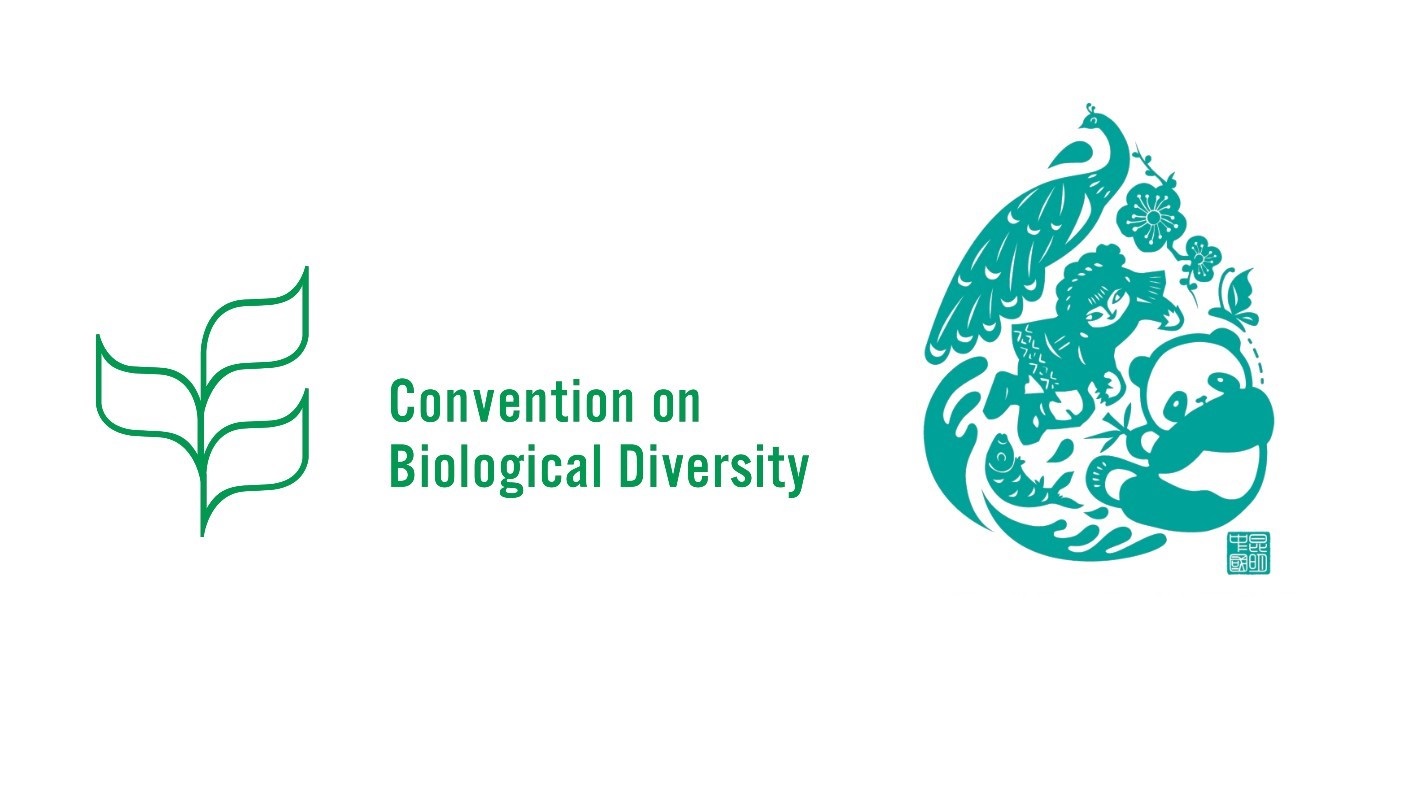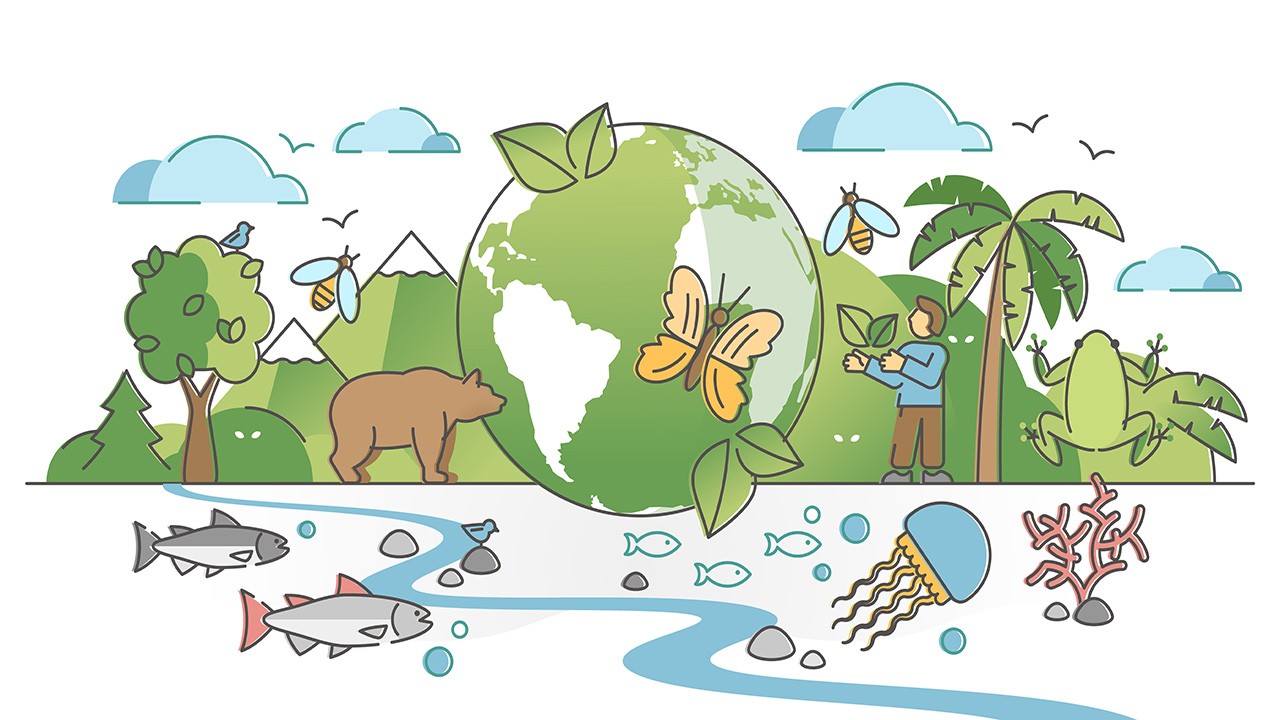The Convention on Biological Diversity (CBD) is a multilateral treaty that aims to promote the conservation of biological diversity, the sustainable use of its components, and the fair and equitable sharing of benefits arising from genetic resources[4]. The Convention covers biodiversity at all levels, including ecosystems, species, and genetic resources[1]. It recognizes that the conservation of biodiversity is “a common concern of humankind” and is an integral part of the development process[4].
Goals of the Convention
The Convention has three main goals[4]:
- The conservation of biological diversity (or biodiversity).
- The sustainable use of its components.
- The fair and equitable sharing of benefits arising from genetic resources
Terms Used in the Convention
The Convention uses several terms to describe the different aspects of biodiversity. Some of the key terms used in the Convention are[3]:
- Biological diversity: the variability among living organisms from all sources, including terrestrial, marine, and other aquatic ecosystems, and the ecological complexes of which they are part. This includes diversity within species, between species, and of ecosystems.
- Ecosystem: a dynamic complex of plant, animal, and micro-organism communities and their non-living environment interacting as a functional unit.
- Genetic material: any material of plant, animal, microbial, or other origin containing functional units of heredity.
- Genetic resources: genetic material of actual or potential value.
- Habitat: the place or type of site where an organism or population naturally occurs.
- In-situ conservation: the conservation of ecosystems and natural habitats and the maintenance and recovery of their ecological integrity.
- Ex-situ conservation: the conservation of components of biological diversity outside their natural habitats.
History of the Convention
The notion of an international convention on biodiversity was conceived at a United Nations Environment Programme (UNEP) Ad Hoc Working Group of Experts on Biological Diversity in November 1988[4]. The Convention was opened for signature at the Earth Summit in Rio de Janeiro in 1992 and entered into force on December 29, 1993[4]. As of September 2023, 196 countries and the European Union have ratified the Convention[4].
The Convention on Biological Diversity recognizes the dependency of indigenous peoples and local communities on biological diversity and their traditional knowledge, innovations, and practices[1]. The Working Group on Article 8(j) was established to promote the implementation of Article 8(j) of the Convention, which calls for the recognition, preservation, and promotion of the knowledge, innovations, and practices of indigenous and local communities[1].
Aichi Biodiversity Targets
The Aichi Biodiversity Targets are a set of 20 targets adopted by the Parties to the Convention on Biological Diversity in 2010 to guide the conservation and sustainable use of biodiversity from 2011 to 2020[6]. The targets cover five strategic goals, including addressing the underlying causes of biodiversity loss, reducing the direct pressures on biodiversity, improving the status of biodiversity, enhancing the benefits of biodiversity and ecosystem services to all, and enhancing implementation through participatory planning, knowledge management, and capacity building[6]. While progress has been made towards achieving the Aichi Biodiversity Targets, there is still much work to be done to halt and reverse biodiversity loss by 2030[4].
The Importance of Biodiversity Conservation

The Convention on Biological Diversity (CBD) has significant implications for biodiversity conservation. The CBD is an international legally-binding treaty with three main goals: conservation of biological diversity, sustainable use of its components, and fair and equitable sharing of benefits arising from the use of genetic resources. The implications of the CBD for biodiversity conservation include:
1. Conservation of biodiversity: The CBD covers biodiversity at all levels, including ecosystems, species, and genetic resources. Parties to the CBD are obligated to inventory and monitor biodiversity, incorporate the concepts of conservation and sustainable development into national strategies and economic development, and preserve indigenous conservation practices.
2. Sustainable use of biodiversity components: The CBD aims to ensure that components of biodiversity, such as ecosystems, species, and genetic resources, are used for the benefit of humankind but in a way that does not threaten their long-term conservation.
3. Fair and equitable sharing of benefits: The CBD establishes an international framework for the fair and equitable sharing of benefits arising from the utilization of genetic resources, including by appropriate access to genetic resources and transfer of relevant technologies.
4. Implementation of the CBD: Parties to the CBD committed themselves to a more effective and coherent implementation of the three objectives of the Convention, aiming to achieve a significant reduction in the current rate of biodiversity loss at the global, regional, and national levels by 2010 as a contribution to poverty alleviation and to the achievement of the Millennium Development Goals.
5. Biosafety: The Cartagena Protocol on Biosafety addresses the safe transfer, handling, and use of living modified organisms (LMOs) that may have adverse effects on biodiversity, taking into account human health.
6. Liability and redress: The Nagoya-Kuala Lumpur Supplementary Protocol on Liability and Redress to the Cartagena Protocol provides international rules and procedures on liability and redress for damage to biodiversity resulting from LMOs.
7. Access to genetic resources and benefit-sharing: The Nagoya Protocol on Access to Genetic Resources and the Fair and Equitable Sharing of Benefits arising from their Utilization sets out an international framework for the fair and equitable sharing of the benefits arising from the utilization of genetic resources.
Despite these commitments, biodiversity loss continues unabated in almost every country, and current conservation efforts remain insufficient to offset the main drivers of biodiversity loss, such as agricultural expansion, logging, overexploitation, and invasive alien species. Parties to the CBD are encouraged to consolidate, secure, and expand the world’s protected areas network, as agreed by signatories to the Convention.
Impacts of the Convention
The Convention has had a significant impact on the conservation and sustainable use of biodiversity. It has helped to raise awareness of the importance of biodiversity and has led to the development of national strategies for the conservation and sustainable use of biological diversity[4]. The Convention has also facilitated international cooperation on biodiversity research and conservation[5]. However, there are still challenges to overcome, such as the need for more effective implementation of the Convention and the fair and equitable sharing of benefits arising from genetic resources[5].
The Convention on Biological Diversity is an important international treaty that aims to promote the conservation of biodiversity, the sustainable use of its components, and the fair and equitable sharing of benefits arising from genetic resources. The Convention has helped to raise awareness of the importance of biodiversity and has led to the development of national strategies for the conservation and sustainable use of biological diversity. The Working Group on Article 8(j) and the Aichi Biodiversity Targets are important components of the Convention that aim to promote the recognition and preservation of the knowledge, innovations, and practices of indigenous and local communities and guide the conservation and sustainable use of biodiversity, respectively. However, there are still challenges to overcome, and more effective implementation of the Convention is needed to ensure the conservation and sustainable use of biodiversity for future generations.
Citations:
- Secretariat of the Convention on Biological Diversity. (n.d.). Working Group on Article 8(j). https://www.cbd.int/convention/wg8j.shtml
- Secretariat of the Convention on Biological Diversity. (n.d.-a). Chapter 2 The Convention on Biological Diversity. https://www.cbd.int/gbo1/chap-02.shtml
- [Hub, I. S. K. (n.d.). Guest article: Convention on Biological Diversity: Overcoming Research Impediments | SDG Knowledge Hub | IISD. https://sdg.iisd.org/commentary/guest-articles/convention-on-biological-diversity-overcoming-research-impediments/
- House, W. (2022). G20 Bali leaders’ declaration. The White House. https://www.whitehouse.gov/briefing-room/statements-releases/2022/11/16/g20-bali-leaders-declaration/
- https://www.eea.europa.eu/publications/92-9167-077-4/download
- Secretariat of the Convention on Biological Diversity. (n.d.-a). Aichi Biodiversity targets. https://www.cbd.int/sp/targets/
Image Courtesy :
Featured Image :https://bitly.ws/322bm
Content Image 1 : https://bitly.ws/322cu
Content Image 2 : https://bitly.ws/322dc
Content Image 3 : https://bitly.ws/322dr



